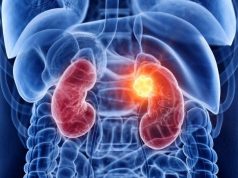Those with current alcohol use disorder or abstinent with alcohol use disorder history had lower likelihood of receiving direct-acting antivirals
By Elana Gotkine HealthDay Reporter
WEDNESDAY, Jan. 4, 2023 (HealthDay News) — For patients with hepatitis C virus (HCV), those with current alcohol use disorder (AUD) or a history of AUD are less likely to receive direct-acting antiviral (DAA) treatment, according to a study published online Dec. 14 in JAMA Network Open.
Lamia Y. Haque, M.D., M.P.H., from the Yale School of Medicine in New Haven, Connecticut, and colleagues examined the association between alcohol use and receipt of DAA treatment among patients with HCV in a cohort study involving 133,753 HCV patients born from 1945 to 1965.
Overall, 38 percent of the patients had current AUD, 12 percent were abstinent with a history of AUD, 6 percent reported at-risk drinking, 14 percent reported lower-risk drinking, and 30 percent were abstinent with no history of AUD. The researchers found that DAA treatment receipt within one year was 7, 33, 53, and 56 percent for those entering the cohort in 2014, 2015, 2016, and 2017, respectively. For those entering the cohort in 2014, the likelihood of receiving DAA treatment within one year was lower for those with current AUD or abstinent with an AUD history compared with those with lower-risk drinking (hazard ratios [95 percent confidence intervals], 0.72 [0.66 to 0.77] and 0.91 [0.84 to 1.00], respectively). For those entering in 2015 to 2017, the corresponding hazard ratios (95 percent confidence intervals) were 0.75 (0.70 to 0.81) and 0.76 (0.68 to 0.86).
“Given the higher risk of liver-related complications, DAA treatment should be prioritized for patients with HCV and unhealthy alcohol use,” the authors write.
One author disclosed financial ties to Playbl, which distributes video games for risk prevention, including substance use, in youth.
Copyright © 2022 HealthDay. All rights reserved.








